In the following article you will find an overview of possible vehicle conversions for motorcycles
Everything you need to know about the features and benefits of the Motorcycle conversions for the disabled need to know.
Converting a motorcycle for use by people with disabilities requires careful planning, professional support and consideration of individual needs. Here is a brief guide to such a conversion:
It is important to emphasize that adapting a motorcycle for the disabled is an individual matter. Professional advice and support are essential to ensure the safety and functionality of the converted motorcycle.
There are different types of disabled motorcycle conversions that can be made depending on the specific needs of the rider. Here are some examples:
It is important to note that these conversions should usually be carried out by professionals to ensure the safety and functionality of the motorcycle. Individual advice from experts is essential to find the best solutions for the specific needs of each rider.
With the FIBS system, a fast reaction time is possible at all times. This is a foot-controlled integral braking system. A servomotor is also recommended to prevent the vehicle from rolling back on a hill.
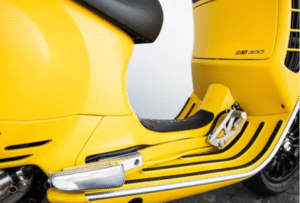
A special handlebar compensates for missing arm and hand lengths.
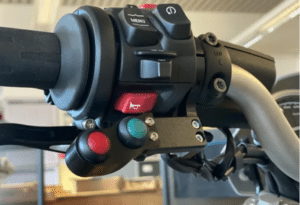
HAND INTEGRAL BRAKING SYSTEM
(HIBS) Perfect braking deceleration thanks to the HIBS. Dual operation and suitable for every vehicle.
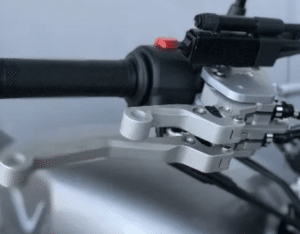
Shifting gears: A discreetly positioned shift cylinder transfers the operation of the shift logic installed on the handlebars to the shift lever. The duality of operability is retained. We offer both an electro-pneumatic shifting system (e.g. for upper leg amputations) and an electromagnetic shifting system (e.g. for lower leg amputations / or foot paralysis).
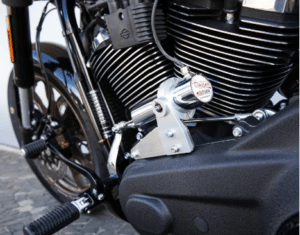
The pneumatic brake valve also controls the existing foot brake lever. This allows either the entire brake system or just the rear brake to be activated separately. The original brake system retains its function. This means that even people without disabilities can ride their motorcycle without any problems.
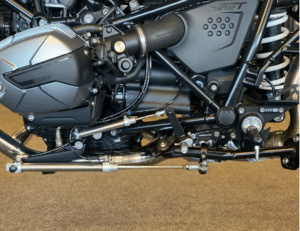
The legal regulations vary from region to region. It is important to check local regulations and obtain the relevant permits.
Not every motorcycle is equally suitable for a conversion. The choice depends on individual needs and the technical possibilities.
Seat adjustments can be customized, from stable seats to electrically adjustable seats for easier transfers.
Yes, there are electronic steering aids and individually adapted handlebars to make handling easier.
Hand levers and pedals are installed to accelerate, brake and operate the clutch.
Yes, there are electronic gearshift systems that allow you to shift gears without a manual clutch.
Tilt stabilizers, driver assistance systems and conversions to three or four wheels can increase stability.
Yes, there are holding devices and special adaptations to securely fix a wheelchair.
Costs vary, but generally the conversion costs are in addition to the standard cost of a motorcycle.
In some countries there are financial support programs or subsidies for vehicle conversions for the disabled, but not in Germany.
Yes, the conversion can be adapted to different types of disabilities and individual needs.
After the conversion, the motorcycle must be tested and approved by the relevant authorities.

By loading the video, you accept YouTube's privacy policy.
Learn more

By loading the video, you accept YouTube's privacy policy.
Learn more